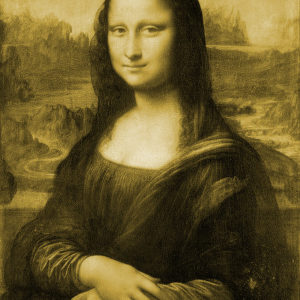Creolization is a process that creates a cultural mixture from several cultures in contact. Creolization is a constant phenomenon that takes on different magnitudes depending on which part of the world and at which point in history one is in. It has found its greatest expression in the context of slave societies that have seen populations from different parts of the world living together and having to make a common society. Essentially, this term is used to describe the transformations of a language under the influence of non-native speakers.
Is creolization, if it is a constant phenomenon of humanity, desirable and to be promoted?
Creolization and linguistics
The current globalization, notably because of its migratory aspect, exposes us to another wave of cultural and linguistic creolization. People adopt a language that is not their own and they transform it because they add elements of their language of origin. The same is true for culture, as uprooted people appropriate the culture of their host country in an imperfect way.
There is necessarily in creolization a phenomenon of deconstruction (to add one must remove), appropriation and reconstruction.
Creolization is the very symbol of an uprooted culture. American mass culture is implanted in countries far from its original source.
Creolization through the American prism
There is a mass culture with Western origins. This culture is sweeping the world and is spearheaded by the cinematographic, musical and technological power of the United States. If we are not witnessing a Westernization of the non-Western world through modernization, which could have been the vector, we can nevertheless observe a possible creolization of cultures through the prowess offered by modernity.
Creolization is a universal process
Creolization is a natural phenomenon when different groups live together. Essentially, this phenomenon is not limited to multicultural or multiethnic societies. Indeed, societies are not homogeneous entities in essence, and there are classes, trades, and corporations that function somewhat in isolation. When people from different groups meet, there is always a possibility of creolization.
Thus, in the musical field, we can observe that jazz is ultimately the meeting of two cultures: the instruments of music from the European world with the Afro-American population and the rhythm of its traditional music. In the same way, we will see that the massive immigration of peasants to the cities in Europe, consecutive to the industrialization of the 19th century, was also a formidable opportunity to creolize the culture of the cities. If, of course, many peasants acculturated to the point of denying the heritage from which they came, we will notice that innovations and artistic, cultural or sociological upheavals took place. The musette balls are one of the examples. The working classes no longer had the same way of getting married as in the countryside where everything was arranged more or less by the families. The guinguettes played the role of meeting place for those who lived in the anonymity of the cities. These dances were distant cousins of the upper class salon dances, but everything was different: the music, the people, the drinks, the atmosphere in short. The dances of this working class population served as an inspiration to the greatest French painters. One can’t help but think of the balls along the Seine when one thinks of the Impressionists.
Yoga is another example of creolization. Initially it was a spiritual practice within the Asian holistic tradition. As it has moved to the West, yoga has become a consumer item like any other, used as much to relax as to look cool.
The globalist creolization
Today, if there is a creolization that is taking place, it is that of Westernization (and more particularly Americanization) through modernity. In the past, countries that wanted to access European progress had to show some sort of credentials. Countries had to show a real desire for cultural assimilation, as evidenced by the disappearance of the Turkish fez in the era of Atatürk and the adoption of European clothing, or the three-piece suits of the Meiji Emperor’s court replacing silk kimonos. These signs of adhesion were only relatively superficial: the Turks remained Turkish just as the Japanese remained equally Japanese. The modernization of their respective countries nevertheless gave rise to a creolization as has always been the case elsewhere. Is a Japanese kamikaze pilot during the Pacific War not the result of flamboyant Western aeronautical engineering with a sense of secular Japanese sacrifice that is found nowhere else?
Wherever modernity intruded, creolization was possible, if one recognizes that it was an essentially European phenomenon during the 19th and part of the 20th century. Today, the sources of innovation are multiple and no longer represent an exclusively Western characteristic. On the contrary, leadership in innovation is well represented in all four corners of the globe, with Asia being the most prominent.
Contemporary and future creolizations
Today, the giants of Silicon Valley are imposing their visions of the future society on us. The loss of our privacy on a global scale is real. It is due to the business models of these companies as much as to the culture in which they were born.
Silicone Valley is the ideological alliance between the libertarian and idealistic populations that settled there and the American military complex that financed the first start-ups of the region. It is therefore also normal that we still find today this pioneer and idealistic spirit mixed with a security will to control everything.
The future creolization will be of Chinese impulse
In the same way that American economic and military hegemony has served to promote its culture and ideas, China will have, through its economic dynamism, just as much the possibility of instilling its values and way of life on the world.
China’s civilizational elements are different in many ways from the American model. Where the United States has championed individualism and consumerism, China will in turn be able to legitimize state control over its population as well as a return to family values, even if today’s China has also been largely immersed in the individualism advocated by the West and reinforced by the one-child policy.
The disappearance of the individual
If the individual is characterized by the control of his private life, we can conjecture the disappearance of the latter. All the innovations and technologies that are emerging are intended to increase the control of companies over personal data and “nudge” our behavior. The unregulated vision of the Chinese model augurs a new era in which the world will certainly be just as individualistic, but the individual will have disappeared because his or her intimacy will be denied. The world of tomorrow will therefore create the non-individualized individualist man. What characterizes him the most, his most intimate data will be held by large groups or governments and potentially available to all. His identity will spread over the web and he will be at the mercy of the government of the country to which he belongs.










